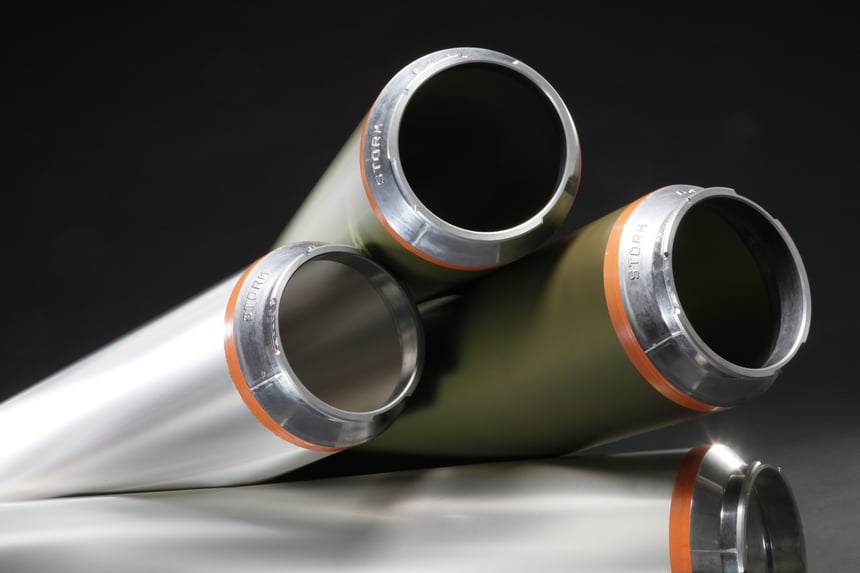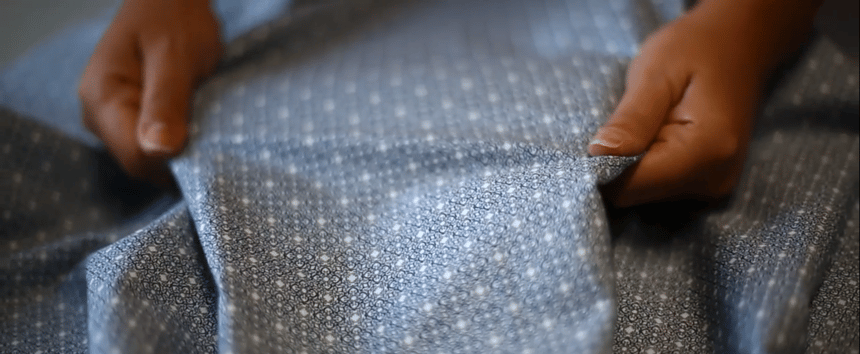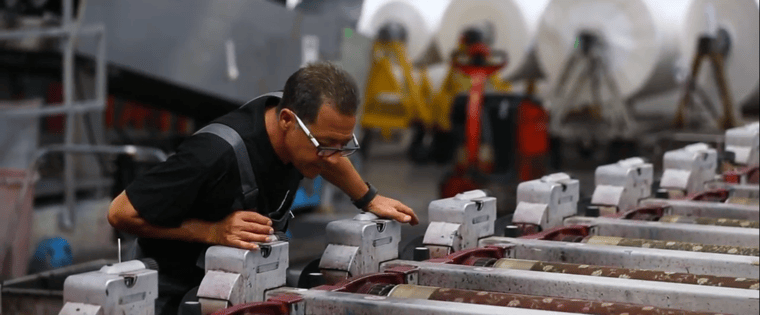Back in the late eighties, when digital textile printing and reactive inks were being developed, estimating the consequences of these innovations was not yet possible. However, it was soon thought that digital textile printing would push rotary screen printing into the background and eventually even replace it.
Now, almost thirty years later, we can say that rotary screen printing is still very much alive and kicking, despite digital printing continuing to develop rapidly.
Expectations before the 21st century
The first digital textile printing machine was introduced by SPGPrints (at that time called STORK) on the ITMA in 1991. At the beginning of the 21st century, when the printing speed of digital textile printing became faster, rotary screen printing was expected to be outdated within a few years. Opinions differed about exactly how long this would take, but most predictions agreed on a period of 10 to 15 years. After that, digital textile printing would have taken over the market entirely.
Today's reality proves the opposite. The digital share of printed textiles is less than 10%. Besides that, we see very clearly that the business for screens is still growing as the overall worldwide printed volume continues to grow. There was indeed a decline in certain areas, especially in areas where digital strongly influenced textile printing, such as in Italy. However, in other areas - for example in Bangladesh - we can see that rotary screen printing is still very prominent. These geographical differences are strongly related to printing volumes.
The reason that in the early nineties the rotary screen printing volume was expected to be largely extinguished around the year 2000 was mainly due to the expected speed improvements and price decline of digital. However, not everything has become cheaper with digital printing and developments to make fast AND reliable digital printers were taking much longer than anticipated. Long orders, for example, are still cheaper to print with rotary screen printing. Especially if the quality guaranteed by digital printing is not necessary, rotary screen printing is often the cheaper choice. Additionally, rotary screen printing is still developing as well, reducing engraving costs and screen prices and therefore enabling cheaper and more efficient solutions.

Developments in rotary screen printing
These developments in rotary screen printing are one of the reasons that digital technologies have still not taken its place. Rotary screen printing continues to respond to the modern market, keeping it relevant. The reverse is also true: the fact that new developments are still being made shows that rotary screen printing is far from a thing of the past. If SPGPrints would not believe in the rotary market, we would not be developing new screens.
After all, new screens and technologies are not developed within a few months; a lot of time and investments are necessary. New screens are developed every so often. In the 70s, for example, Penta technology was developed as a logical evolution next to the standard screens. After that, NovaScreens® were developed in the 90s. Quite recently, in 2019, OrtaScreens™ were added to the long list of screen developments.
In order to stay up to date in both the digital and rotary markets, it was important that rotary screen printing became able to approach the image quality performance of digital textile printing. The new OrtaScreens™ respond to the digital development by enabling more detail and sharper lines in rotary screen printing. OrtaScreens™ can do this with an innovative orthogonal raster of holes. The development of this technology alone took more than 2 years.
Nowadays, a lot of printing companies use both digital and conventional printing machines. This leads to a higher expectation of quality. After all, the final customer only appreciates the quality of the final product, and he does not care whether it is printed with a digital or rotary printer.
Digital textile printing and rotary screen printing combined
While the end consumer mainly focuses on the quality of the final product, digital printing often allows you to achieve a higher quality for these consumers. Nevertheless, printing companies still invest in rotary screen printers. There are a few reasons for this.
First of all, there are the economical reasons. As a digital printing company, it is generally difficult to compete with companies that use rotary screen printing. That’s because rotary screen printing enables you to print larger volumes faster and cheaper. That is why long print runs are still being printed with rotary screen printing. Also, striving for the highest quality with digital printing is an expensive investment, especially if this high quality is not an absolute necessity. Take, for example, low-end fashion with few colors. It is much cheaper to make this with rotary screen printing, especially because mass production is much cheaper and faster with rotary technologies.
Besides the economical reasons, companies still invest in rotary machines because there are some technical differences between the two types of printing. For example, some textiles can’t be printed digitally. These will have to be printed conventionally. This also applies if dyes have to penetrate the fiber completely; if the print has to be identical on both sides of the fabric then digital printing is not possible. Another technological difference is that certain applications, such as pigment printing, are quite expensive in digital textile printing because of the high ink consumption in combination with a costly production method for the inks. This makes the production process very expensive, while you want to produce a cheap product. That is why rotary screen printing is more suitable for these dyes.
Because of these differences, the tendency that prevails nowadays is that the two technologies can best be used side by side. That is why many companies nowadays invest in digital but also want at least one machine to enable rotary screen printing.
The gap between them
That being said, there are instances in which digital developments have put some distance between rotary screen printing and digital textile printing, like:
- industries where high quality is very important: digital can give the highest quality
- industries where a high production rate with competitive pricing is required: rotary can give the largest volume to the lowest prices
- designs that profit from flexibility and reruns (fashion, sportswear): digital offers higher flexibility and perfect matching reruns
- time to market: digital needs less preparation time
Digital textile printing provides a lot of flexibility, since it does not need preparation but can start almost instantly; furthermore, it allows to change designs on the same fabric in a split second.

Future perspective
Nevertheless, the prediction that digital textile printing would completely replace conventional rotary screen printing did not come true. That expectation has changed over the years: conventional printing is not expected to disappear in the foreseeable future. There is a common understanding in the industry that both technologies will remain present as they are to a large extent complementary.
One of the reasons for this is that nowadays more than 4 seasons are acknowledged in fashion, which means that collections are being replaced faster. The lifespan of clothing is getting shorter and shorter, which makes digital textile printing the most suitable. But the price gap still plays a major role here and therefore still the majority of fashion is printed with rotary. Customers are not always willing to pay the added value of higher quality that digital textile printing offers.
There are still several production conditions that justify the choice of digital textile printing. For example, digital textile printing is interesting for printing volumes that are too small for rotary screen printing. Exclusivity and higher quality go hand in hand.
Your printing process and selecting a printer
Several factors influence the choice between rotary and digital. We already mentioned volume and price per meter as a decisive factor when choosing between a rotary screen printer or a digital textile printer (even if this is a single-pass printer that can print the large volumes but never at the price of rotary at those volumes). The underlying question is: what suits your company?
As mentioned earlier, many companies use both technologies. If you still want to make a choice, you have to respond very specifically to your unique situation, market or product and make a choice for a technology based on that. Take the following factors into account:
- Volumes
- Prices
- Quality expectations
- Flexibility
- Necessity of reruns
- The type of textile you use (not all are applicable in digital printers)
- The type of ink/paste you use (not all are applicable in digital printers)
- The type of designs you use: digital allows photographic printing with endless repeats
Zooming in on your own company and production process can be difficult. As a globally established company, SPGPrints has in-house specialists who know rotary screen printing as well as the digital textile printing market. We are happy to help you optimize your production process with our expertise. This way you will be sure that the investment in a new printer is justified. Contact your printer specialist here:





